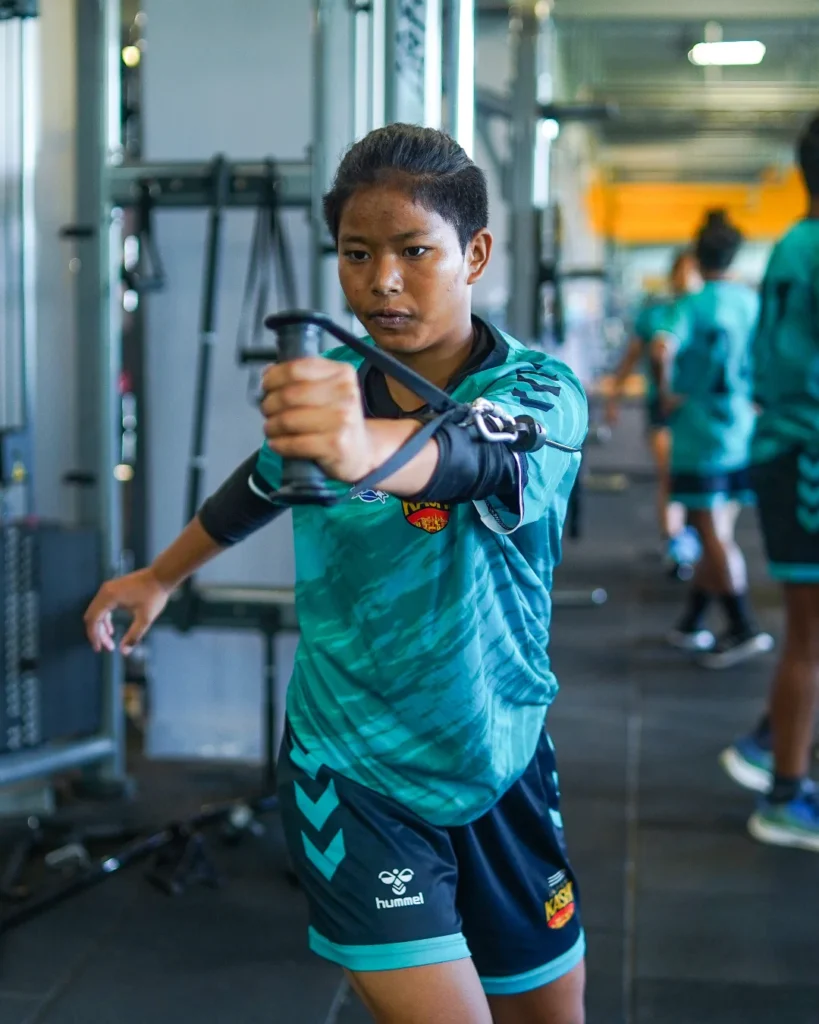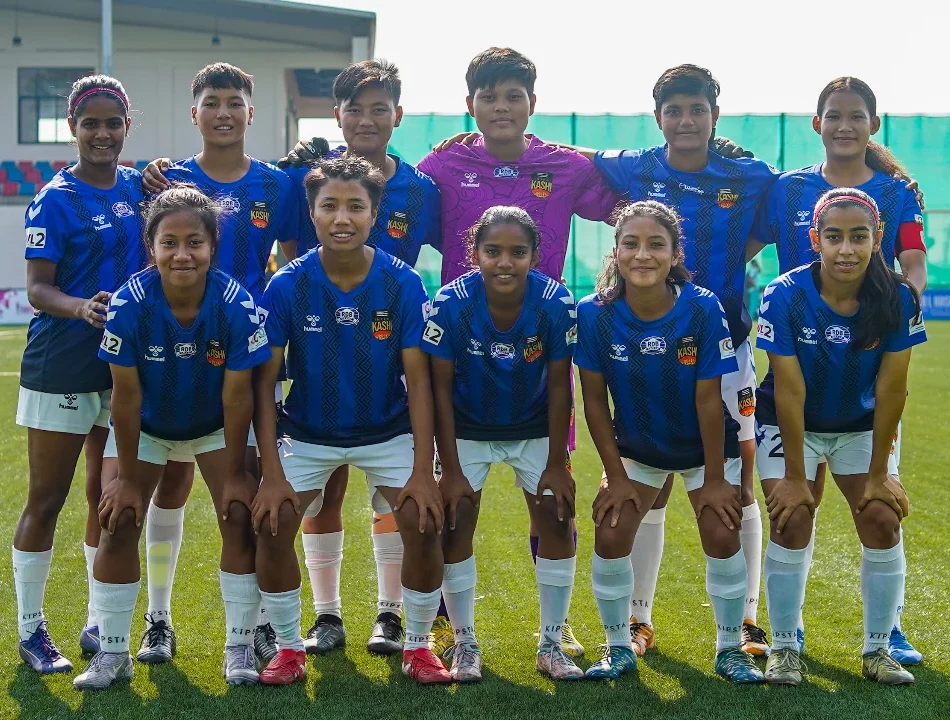In their debut season at the Indian Women’s League 2 (IWL 2), Inter Kashi FC’s women’s team entered with modest expectations. According to the Head of Women’s Team, Arka Bhattacharya, the primary goal wasn’t immediate success but laying down a solid core for the future.
“We knew it would be a tough season. The group stage had just four matches, and all the teams were strong, with better football infrastructure already in place,” Arka shared. “We had to assemble our squad within a month. We managed to win one game, but lost the other three. Honestly, we should have done better.”
Despite the results, Arka remains optimistic. The team, affectionately dubbed The Vishalakshis, had an age range of 14 to 26, with most players aged 18 or younger. For many, it was not only their IWL 2 debut but also their first time playing outside their home state. Few had experience in state championships, which are also short tournaments.
“Our recruitment was very intentional. We didn’t base our selections solely on whether someone had IWL experience. Instead, we looked for fresh players who aligned with our long-term vision and could grow with the club,” he explained. “The feedback we received was encouraging — many said we played attractive football.”
Pointing to examples like Garhwal United, which took four seasons to win the IWL, Arka emphasized the importance of patience. “Teams like them benefit from state leagues where they can evaluate players across a season. We don’t have that advantage in Uttar Pradesh.”
Still, Arka leveraged his extensive scouting experience, identifying talent from a wide network rather than relying on recommendations. “We signed players from 10 different states. We deliberately avoided building a squad based on just one region, like all-Manipur or all-Haryana teams. We aimed for a diverse mix that suited our playing philosophy.”
There were hurdles. The late announcement of the league made it difficult to finalize contracts. “We couldn’t register three of our key players, despite them training with us for a month. That definitely impacted our performance,” Arka admitted.
Nevertheless, Inter Kashi’s management backed the team wholeheartedly. Players were provided with GPS vests for performance monitoring, quality accommodation, access to gym facilities, a swimming pool with ice bath options for recovery, and an overall professional training environment. But adapting to the intensity of competitive football was a steep climb. “Most of our players were used to one training session a week. We increased that to ten gradually — a big jump. Plus, the tight match schedule led to fatigue and injuries.”

Encouragingly, several players have attracted attention from other clubs, though whether those offers turn into contracts remains to be seen.
Reflecting on the season, Arka said, “We lacked a bit of luck and experience. In pressure moments, our players were overwhelmed. But this is part of the learning curve.”
Looking ahead, Inter Kashi’s ambitions are clear. “We’re betting on the future. Our immediate aim is to reach at least the final stage of IWL 2. Eventually, we want to win the IWL — maybe by 2030.”
More than just winning, Arka is focused on player development. “The player pool in India is small. We could take shortcuts and select players based on just work rate. But we want to build smart footballers — players who can think, make overlap runs, and read the game. Only then can India grow as a footballing nation.”


